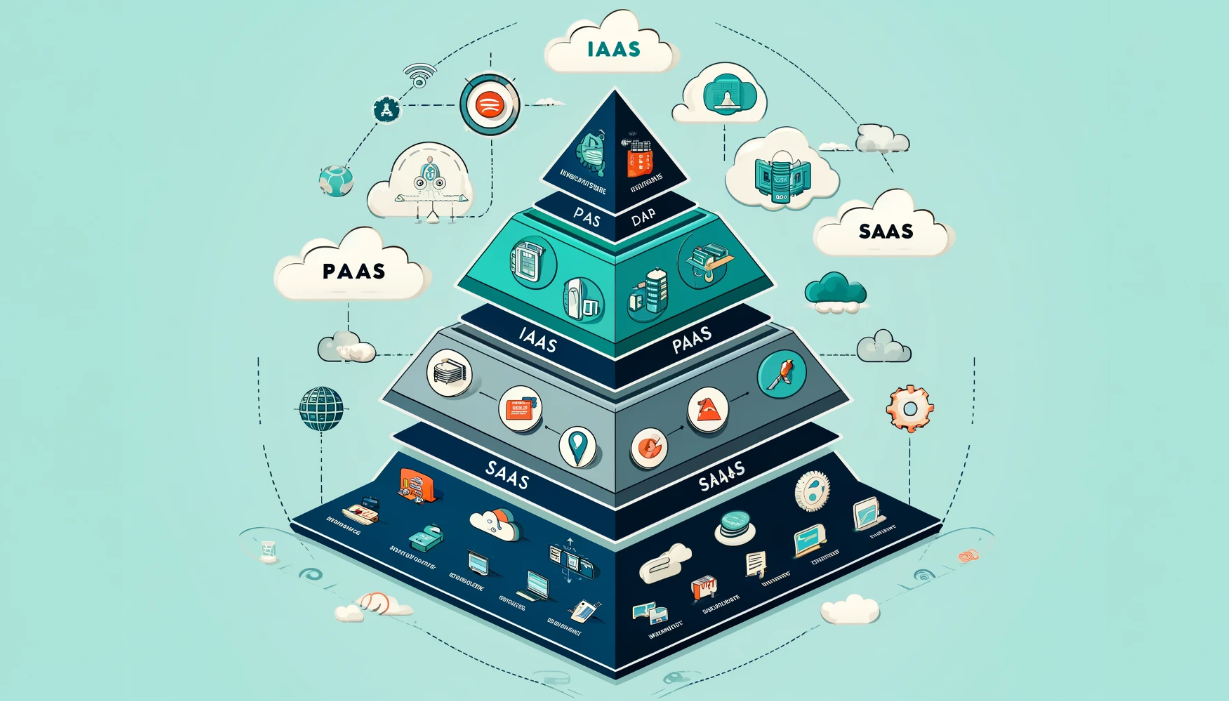PaaS vs IaaS vs SaaS: Understanding the Cloud Service Models
Meta Description: Confused by cloud jargon? Learn the key differences between PaaS, IaaS, and SaaS. Compare features, use cases, and pros/cons to choose the right cloud model for your business.
☁️ Introduction: Cloud Isn’t One-Size-Fits-All
Cloud computing has transformed how businesses build, deploy, and manage applications — but choosing the right model is critical to success.
If you’re unsure whether your business should use:
-
IaaS (Infrastructure as a Service)
-
PaaS (Platform as a Service)
-
SaaS (Software as a Service)
You’re not alone.
This guide breaks down each cloud model, provides a side-by-side comparison, and helps you choose the best fit based on your project’s needs, team size, and technical requirements.
Cloud Service Models at a Glance
| Feature | IaaS | PaaS | SaaS |
|---|---|---|---|
| Definition | Infrastructure delivered over the internet (virtual servers, storage, networking) | Platform with tools to build, test, and deploy apps | Software accessed via browser with no infrastructure management |
| Managed By Provider | Networking, storage, virtualization | Networking, storage, OS, runtime | Everything |
| Managed By You | OS, middleware, runtime, apps | Apps, data | Just usage |
| Control Level | High | Medium | Low |
| Examples | AWS EC2, Google Compute Engine, Azure VMs | Heroku, Google App Engine, Render | Google Workspace, Salesforce, Dropbox |
| Best For | DevOps teams, custom architectures | Developers, startups, app deployment | End users, businesses needing plug-and-play software |
IaaS: Infrastructure as a Service
What It Is:
IaaS provides virtualized computing resources over the internet. You rent servers, storage, and networks — and you manage the rest.
Use Cases:
-
Custom software development
-
Scalable backend for SaaS or mobile apps
-
Hosting multiple VMs for DevOps workflows
-
Running big data workloads or AI training
Pros:
✅ High control and flexibility
✅ Scales easily with demand
✅ Compatible with any OS or app stack
Cons:
❌ Requires IT/admin knowledge
❌ Complex to set up and maintain
❌ Security is your responsibility
⚙️ PaaS: Platform as a Service
What It Is:
PaaS delivers a ready-to-use environment where developers can build, deploy, and manage applications without worrying about servers, OS, or runtime.
Use Cases:
-
Web and mobile app development
-
MVP deployment for startups
-
Microservices and CI/CD pipelines
-
APIs and backend-as-a-service (BaaS)
Pros:
✅ No infrastructure management
✅ Faster time to market
✅ Built-in scaling, security, and backups
Cons:
❌ Less customization than IaaS
❌ Vendor lock-in risks
❌ May not fit legacy app needs
SaaS: Software as a Service
What It Is:
SaaS delivers fully developed applications via the internet. You just sign up, log in, and start using the software.
Use Cases:
-
Email, file sharing, video conferencing
-
CRM, HR, accounting, and collaboration tools
-
Project and time management apps
Pros:
✅ No installation or maintenance
✅ Accessible from any device
✅ Predictable subscription pricing
Cons:
❌ Limited to features provided
❌ No backend control
❌ Data hosted offsite
Which One Should You Choose?
| Choose If You Need… | Best Option |
|---|---|
| Full control over environment & infrastructure | IaaS |
| Fast deployment without managing servers | PaaS |
| A tool you can use without development | SaaS |
Real-World Examples
| Business Type | Use Case | Best Model |
|---|---|---|
| Startup Dev Team | Deploying MVP quickly | PaaS (e.g., Heroku, Railway) |
| Enterprise IT | Running hybrid infrastructure | IaaS (e.g., AWS EC2, Azure) |
| Marketing Team | Using a CRM like HubSpot | SaaS (no dev work required) |
✅ Final Thoughts: Pick the Right Cloud Model for the Right Moment
There’s no universal “best” — just what’s best for you right now.
-
Want full control and scalability? Go with IaaS
-
Want to deploy apps without managing servers? Try PaaS
-
Need a tool to get things done with no dev effort? Use SaaS
As your business evolves, you might use all three. What matters is starting with the right fit for your team, goals, and budget.

